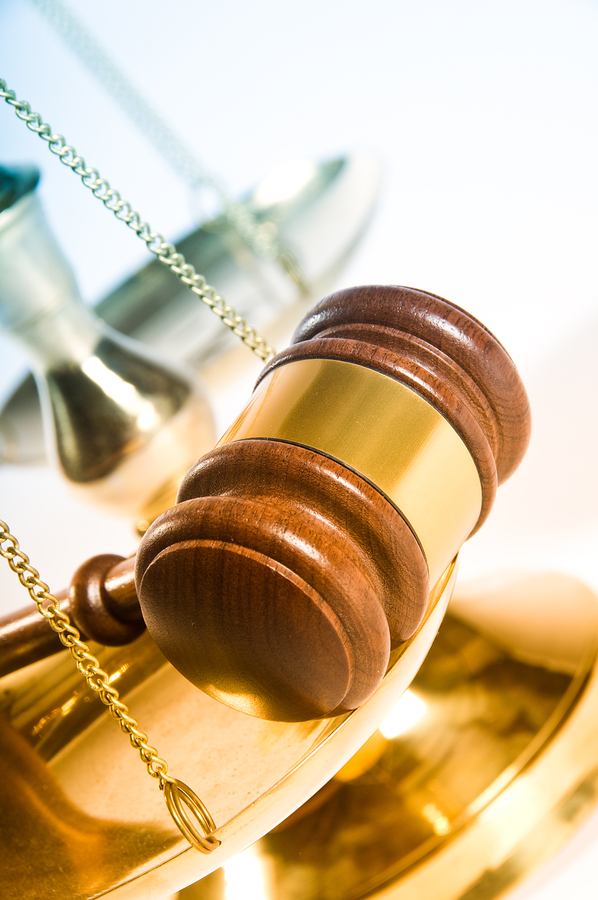
The shift in policy, announced Tuesday, is intended to slow the spread of the novel coronavirus by allowing judges, prosecutors, defense attorneys and defendants to work and appear remotely. It is unclear whether it will lead to lasting changes in how the federal judiciary operates, and some are concerned that the video and teleconferences could cut off media and public access to what should be open proceedings.
Leaders of the Judicial Conference - the governing body of the federal courts - on Sunday approved a temporary exception to long-standing rules prohibiting cameras in the courtroom in response to provisions tucked into the federal stimulus legislation signed by President Donald Trump last week. But there is no guarantee in the law that the public will be able to watch or listen when defendants enter plea agreements or are sentenced to prison in hearings held remotely.
Court transparency and media advocates are concerned that the judiciary's response to the pandemic will limit oversight of court proceedings.
"Members of the press and public have a First Amendment right to attend both trial and pre-trial proceedings in criminal matters," Katie Townsend, legal director of the Reporters Committee for Freedom of the Press, said Tuesday in an email. "While courts can and should utilize new technology to continue to hold necessary criminal hearings while courtrooms are physically closed, that same new technology also can and should be used to ensure that those hearings continue to be open to the public, as they normally would be."
The Administrative Office of the U.S. Courts said in a statement Tuesday that it is "evaluating" the issue of public and media access in criminal proceedings and will provide "additional guidance in the near future."
Separately, the Judicial Conference on its own signed off on allowing judges in civil lawsuits to authorize the use of teleconferencing to provide public access. In a letter Tuesday to court officials, James Duff, director of the Administrative Office of the Courts, said his office is in touch with teleconference service companies about providing free access to the media and the public in civil cases.
Judicial Conference policies do not apply to the Supreme Court, which does not allow cameras in the court, and rarely releases same-day audio of its oral arguments. The high court indefinitely postponed two weeks of arguments scheduled for March, and it has not said what it will do about those scheduled for April.
Even before the pandemic, federal appeals courts throughout the country had broadcast live-streamed audio of arguments. The U.S. Court of Appeals for the 4th Circuit in Richmond, Virginia, on Tuesday announced remote arguments scheduled through April 20 that will be held by teleconference and accessible to the public from the court's website.
But trial courts, subject to federal rules prohibiting cameras and broadcasting in criminal proceedings, have been slow to adopt new technology.
Without immediate guidance from the Judicial Conference, decisions about access are being made on a hearing-by-hearing basis by individual judges.
Chief U.S. District Judge Beryl Howell of Washington said in a statement Tuesday that her court "is committed to providing the public and the media with access to public court proceedings, including those held by video or teleconference."
U.S. District Judge James Boasberg in Washington on Monday granted requests by reporters to listen to a hearing conducted by teleconference in a coronavirus-related lawsuit seeking the release of 1,300 held at migrant family detention centers run by U.S. Immigration and Customs Enforcement nationwide.
In the Southern District of New York, U.S. District Judge Loretta Preska scheduled a teleconference Tuesday in a case related to multimillionaire sex offender Jeffrey Epstein, who died in custody last year, and required the parties to file dial-in information on the public docket.
At the federal courthouse in Alexandria, Virginia, attorneys and defendants may appear on video, but the public and media must come to the courthouse to observe. Bill Blevins, the chief deputy clerk, said the court plans to provide public access, but "the capacity and the ability of our system to handle the variety of things going on" isn't there yet.
Gabe Roth, of the court transparency organization Fix the Court, said he is skeptical that the judiciary's adoption of modern technology will have lasting impact.
"The judiciary has all of the sudden realized that these technological capabilities exist to make the criminal justice system more humane and accessible," he said, "but as the court giveth, the courts will probably take it away once this pandemic is over."
Even if the judiciary becomes more comfortable with technology, he noted that Judicial Conference leaders acted only after passage of the stimulus bill. The language specifies that authorization of video and telephone conferencing ends 30 days after the date on which the national emergency ends.
Defense attorneys generally have resisted past efforts to hold hearings remotely, saying their clients should face judges in person when their rights are at stake and prison is a possibility. But A.J. Kramer, head of the public defender's office in Washington, said Tuesday that if criminal cases can move forward instead of stalling for weeks or months because of the pandemic, the remote hearings may result in some defendants being freed more quickly.
"It's a trade-off," Kramer said. For defendants who are detained, "the alternative is moving back and forth from jail to the courthouse and exposed to who knows how many people in the process."
(COMMENT, BELOW)


 Contact The Editor
Contact The Editor
 Articles By This Author
Articles By This Author